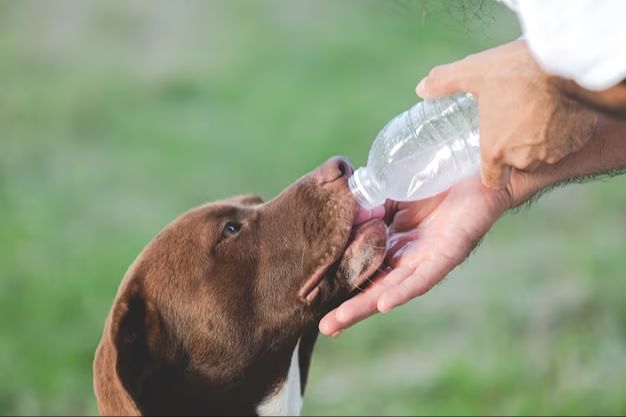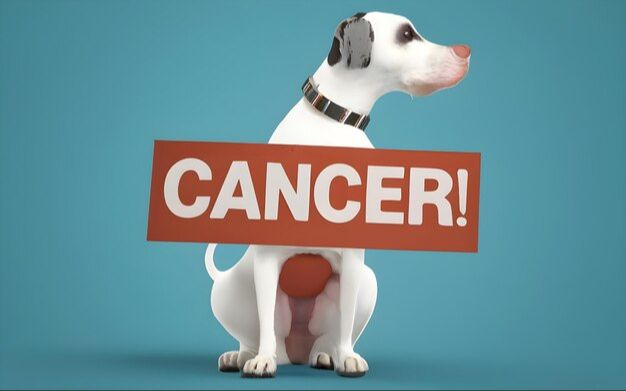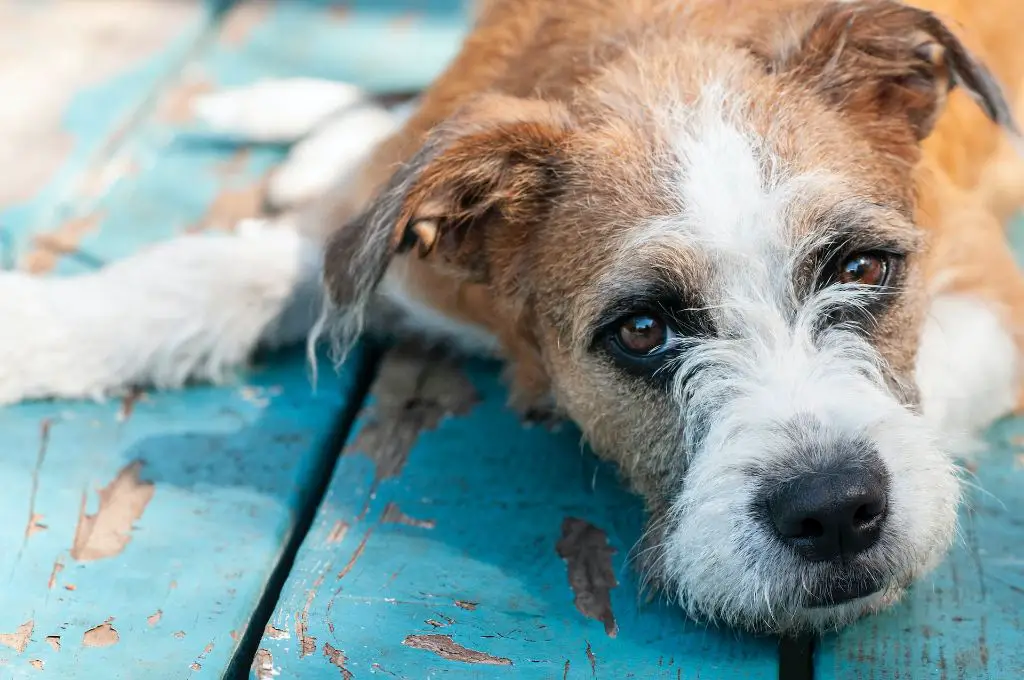Introduction
If you have noticed your dog drinking more water lately, it can be puzzling and concerning. As a dog owner, you want to keep your four-legged friend happy and healthy. Increased thirst or polydipsia can indicate an underlying issue, and in some cases, may be a sign of cancer in dogs.
Learning about the connections between cancer and excessive water drinking can help you determine if your dog needs to see the vet. While not all dogs with cancer will show increased thirst, it is one potential symptom. Being aware of the causes, diagnosis, and treatment options allows you to make informed decisions about your dog’s health.
In this article, we will explore when dogs with cancer drink more water and steps you can take if you notice this symptom. Increased hydration needs in dogs with cancer can often be managed to help keep them comfortable. Understanding possible reasons for your dog’s behavior provides helpful context. Recognizing changes from normal thirst levels is key to determining if a vet visit is needed.
Overview of Cancer in Dogs
Cancer is unfortunately very common in dogs. Some estimates state that 1 in 3 dogs will develop cancer at some point in their lives. The most common cancers seen in dogs include:
- Lymphoma – This blood cancer affects the dog’s lymph nodes and immune system. It accounts for approximately 20% of all canine cancers.
- Mast Cell Tumors – These skin cancers are very common in dogs, representing about 20% of skin tumors. They may be small bumps or large masses.
- Melanoma – Malignant melanoma is an aggressive skin cancer that makes up 7-10% of skin tumors. It often affects the dog’s mouth, lips, nails or paw pads.
- Osteosarcoma – This bone cancer most often occurs in the dog’s limbs and is common in large breeds. It accounts for roughly 5% of all dog cancers.
- Hemangiosarcoma – This is an aggressive cancer of the blood vessels that frequently spreads to other organs like the heart, liver or spleen.
While scary, many cancers in dogs are treatable if caught early. Knowing the signs of cancer, like increased thirst, can help owners detect issues early to improve prognosis.
Increased Thirst as a Symptom
One of the most common symptoms of cancer in dogs is an increase in thirst and water intake. This is medically known as polydipsia. When a dog is drinking significantly more water than usual, it can signal an underlying health problem like cancer.

Increased thirst is often one of the first noticeable signs of cancer in dogs. Owners may see their dog drinking frequently throughout the day, lapping up entire bowls of water, or urgently seeking out water. This is the dog’s way of compensating for internal fluid loss or dehydration caused by the cancer.
There are a few key reasons why dogs with cancer tend to be more thirsty:
- The cancer cells increase metabolism and cellular activity, which uses up more bodily fluid.
- Some cancers cause electrolyte imbalances that disrupt normal thirst signals.
- The kidneys may struggle to concentrate urine in certain cancers, leading to the need for more fluid intake.
- Medications like chemotherapy drugs tend to have dehydrating side effects.
- Inflammation from cancer growths can interfere with normal anti-diuretic hormone functioning.
- Nausea or vomiting from the cancer treatment can cause dehydration.
Increased thirst on its own doesn’t definitively mean a dog has cancer. But when paired with other symptoms like weight loss, lethargy, vomiting, etc., it can be a red flag for a serious underlying condition like cancer that requires prompt veterinary attention.
Reasons for Increased Water Intake
There are several potential reasons why dogs with cancer may start drinking more water.

One common reason is a loss of appetite. Cancer can suppress a dog’s appetite, leading them to eat less food. With less food intake, dogs may drink more water to compensate. The extra water helps fill their stomach and prevents dehydration.
Nausea is another side effect of cancer that can increase thirst. Chemotherapy drugs, cancer itself, and certain pain medications can cause nausea. Dogs may drink excessively trying to get rid of the bad taste or discomfort in their mouth and stomach.
Certain pain medications like steroids have increased thirst as a potential side effect. As vets prescribe medications to help manage cancer pain, increased urination and thirst are common drug reactions.
Overall, the underlying cancer is the root cause for appetite changes, nausea, and pain needing medication. While the treatments themselves can independently increase thirst, it’s the presence of cancer that leads to these downstream effects resulting in dogs drinking more water.
When to See the Vet
If your dog suddenly starts drinking significantly more water than usual, it’s important to recognize this as an abnormal behavior that requires veterinary attention. Increased thirst can indicate serious underlying issues that need to be properly diagnosed and treated.
Watch for not just drinking more overall throughout the day, but excessive water intake all at once. Things to look out for include:
- Drinking an unusually large amount in one session
- Appearing constantly preoccupied with drinking water
- Frequently lapping up entire bowls of water in just minutes
- Seeking out and drinking from unusual sources like the toilet or puddles
Compared to their normal routine, a dog that drinks 3-4 times more water or is compulsively drinking at every opportunity likely has an issue requiring medical intervention. Don’t assume they are just extra playful or thirsty that day.
Increased urination often accompanies excessive thirst as the dog’s body tries to flush out all the excess water intake. So urinating more frequenly, or asking to go out constantly, can also signal a problem.
If your dog displays increased thirst over a day or two, schedule a vet visit right away. Waiting to see if it resolves on its own can allow a minor issue to escalate into a more serious condition. It’s better to have the vet examine your dog and find nothing wrong, than ignore the red flag of excessive drinking.
Diagnosing the Cause
If your dog is drinking more water than usual, your vet will run tests to determine the underlying cause. Diagnosing cancer in dogs typically involves a combination of the following:

Physical exam – Your vet will thoroughly examine your dog for any lumps, bumps, or other abnormalities that may indicate cancer.
Blood and urine tests – These lab tests allow your vet to look for indicators of cancer, such as abnormal cell counts or the presence of cancer biomarkers.
Imaging – X-rays, ultrasounds, CT scans, and MRIs provide visual evidence of tumors or other cancer indicators.
Biopsy – Your vet may take a small sample of tissue or cells to be examined under a microscope for cancer confirmation.
Endoscopy – A lighted scope inserted into the body lets your vet visually inspect for tumors or abnormalities.
Based on your dog’s symptoms and the results of these tests, your vet can determine if cancer is causing the increased thirst. Specific tests may vary based on the type and location of suspected cancer.
Treating the Underlying Cancer
The main treatments for cancer in dogs include surgery, chemotherapy, radiation therapy, and immunotherapy. The treatment plan will depend on the type of cancer, its stage and grade, and your dog’s overall health.
Surgery is often the first line of treatment and can be curative for certain cancers that have not yet spread. The goal is to completely remove the tumor and surrounding margins of healthy tissue. Surgery may be followed by chemotherapy or radiation to kill any remaining cancer cells.
Chemotherapy uses anti-cancer drugs to kill cancer cells and stop them from dividing and growing. It is often used for cancers like lymphoma, melanoma, mast cell tumors, and osteosarcoma. Chemotherapy may be injected, given orally, or administered topically. Combination chemo protocols are frequently used.
Radiation therapy uses targeted high-energy rays to shrink and destroy tumors. It requires anesthesia and multiple visits. Radiation is often used for nasal tumors, brain tumors, and certain cancers when surgery is not an option.
Immunotherapy stimulates the immune system to attack cancer cells. Monoclonal antibody drugs and certain vaccines help the immune system recognize cancer. Immunotherapy provides targeted treatment with less side effects than chemotherapy.
Discuss all treatment options thoroughly with your veterinarian to determine the best approach for your individual dog and cancer type. Treatment side effects should be managed to maintain quality of life.
Managing Increased Thirst
If your dog is drinking more water due to an underlying health condition, there are some tips to help keep them properly hydrated:
- Always ensure fresh, clean water is available – Change water bowls frequently to provide cool, fresh water. Consider using bowls that automatically refill.
- Offer wet food or add water to kibble – Canned food or kibble soaked in water can provide extra hydration.
- Make water more enticing – Add a little low-sodium broth, bone broth, or ice cubes to stimulate drinking.
- Use fountains or flowing water – The sound and movement can entice dogs to drink more.
- Take water on walks – Bring portable bowls or bottles to offer water breaks during walks.
- Monitor urine color – Dark yellow urine indicates dehydration; encourage more water intake.
- Consider intravenous fluids – If your dog won’t drink enough, ask your vet about supplementing with IV fluids.
While increased thirst can be concerning, taking steps to keep your dog well-hydrated will help them feel their best.
Outlook and Prognosis
The prognosis for dogs with cancer depends greatly on the type of cancer and how early it is detected and treated. Some of the most common cancers in dogs include:
Lymphoma
Lymphoma is one of the most frequently diagnosed cancers in dogs. With treatment, dogs with lymphoma have a median survival time of 12 months. However, some types of lymphoma, such as T-cell lymphoma, tend to be more aggressive.
Mast Cell Tumors
Mast cell tumors are the most common skin tumor in dogs. If caught early and treated with surgery alone, dogs have an excellent prognosis with a median survival time of 2-3 years. However, higher grade tumors require additional treatments like radiation or chemotherapy and have shorter survival times.
Osteosarcoma
Osteosarcoma is an aggressive bone cancer most commonly affecting the limbs of large and giant breed dogs. Even with treatment, most dogs will succumb to the disease within 1 year. Amputation and chemotherapy provide the best chance of increasing survival time.
Overall, while a cancer diagnosis in dogs is serious, early detection, accurate diagnosis of cancer type, and prompt treatment initiation afford the best chances of remission and increased survival times.
When to Euthanize
Making the decision to euthanize a beloved dog with cancer is heart-wrenching. As a responsible pet owner, it is important to prioritize your dog’s quality of life when assessing if euthanasia is the most humane option.

Consider your dog’s symptoms – is he experiencing uncontrolled pain, unable to eat or drink, extremely lethargic or depressed? Also assess his mobility, interest in surroundings, and engagement with the family. Is he still able to enjoy short walks or playtime? Does he wag his tail and seem cheerful at times?
If your dog’s symptoms are severely impacting his quality of life and not reversible with treatment, euthanasia may be the kindest option. Consult with your vet, who can offer their medical perspective. They can help you determine if your dog’s condition has declined beyond reasonable hope for recovery.
While incredibly difficult, focusing on relieving your dog’s suffering can help provide closure. Take comfort in knowing you are making this choice out of love, to preserve your dog’s dignity. Be present during the euthanasia so your dog feels safe and calm when passing.